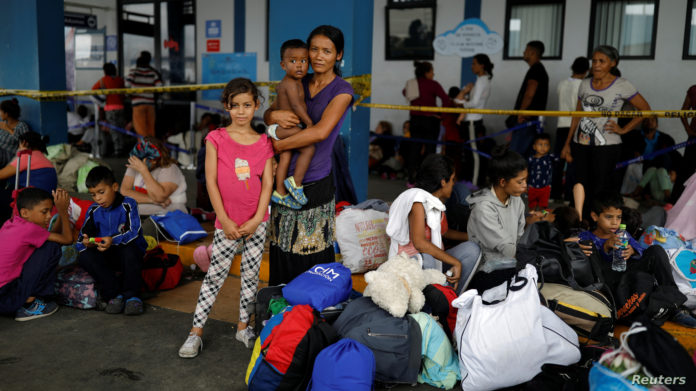
GENEVA – The International Organization for Migration said Friday that 2019 might be the deadliest year for migrant deaths in the Americas since it began keeping records six years ago.
The U.N. agency said 695 people have died this year while making the treacherous journey across the central Mediterranean Sea, the world’s deadliest migrant corridor. It said that’s one-sixth the number of deaths recorded in 2016, when fatalities reached an all-time high of nearly 4,200 on the route.
But IOM spokesman Joel Millman said the Mediterranean route figure for 2019 was barely larger than the 634 migrant deaths recorded in the Americas.
“We have never seen anything like that before, where the principal migration routes that link Latin America to North America are now, this year, virtually as deadly as the central Mediterranean route has been for the last six years,” he said.
Venezuelan exodus
Millman attributed the surprising rise to the mass movement of refugees and migrants from Venezuela. He told VOA that more than 4 million Venezuelans had fled the country over the past two years. He said such a large volume of people on the move creates conditions that will result in more fatalities.
“The place we have seen it worst of all is the Caribbean, where we know 157 deaths at sea,” he said. “Last year at this time, there were 24. So we are talking about more than six times the volume of sea deaths. And I know that the majority of deaths in the Caribbean are Venezuelan migrants and refugees trying to get to the Caribbean islands.”
Millman said the nationalities of 227 people who died while heading toward the United States were unknown. He noted that Latin American migrants from countries such as Honduras, Guatemala, El Salvador and Ecuador accounted for the largest number of fatalities after Venezuela.
Included in this year’s statistics were the deaths of six migrants from Cameroon. Millman said three Cameroonians drowned off the Pacific coast of Chiapas, Mexico, in the last few weeks and one man died while in the custody of U.S. Customs and Border Protection agents in California.


























